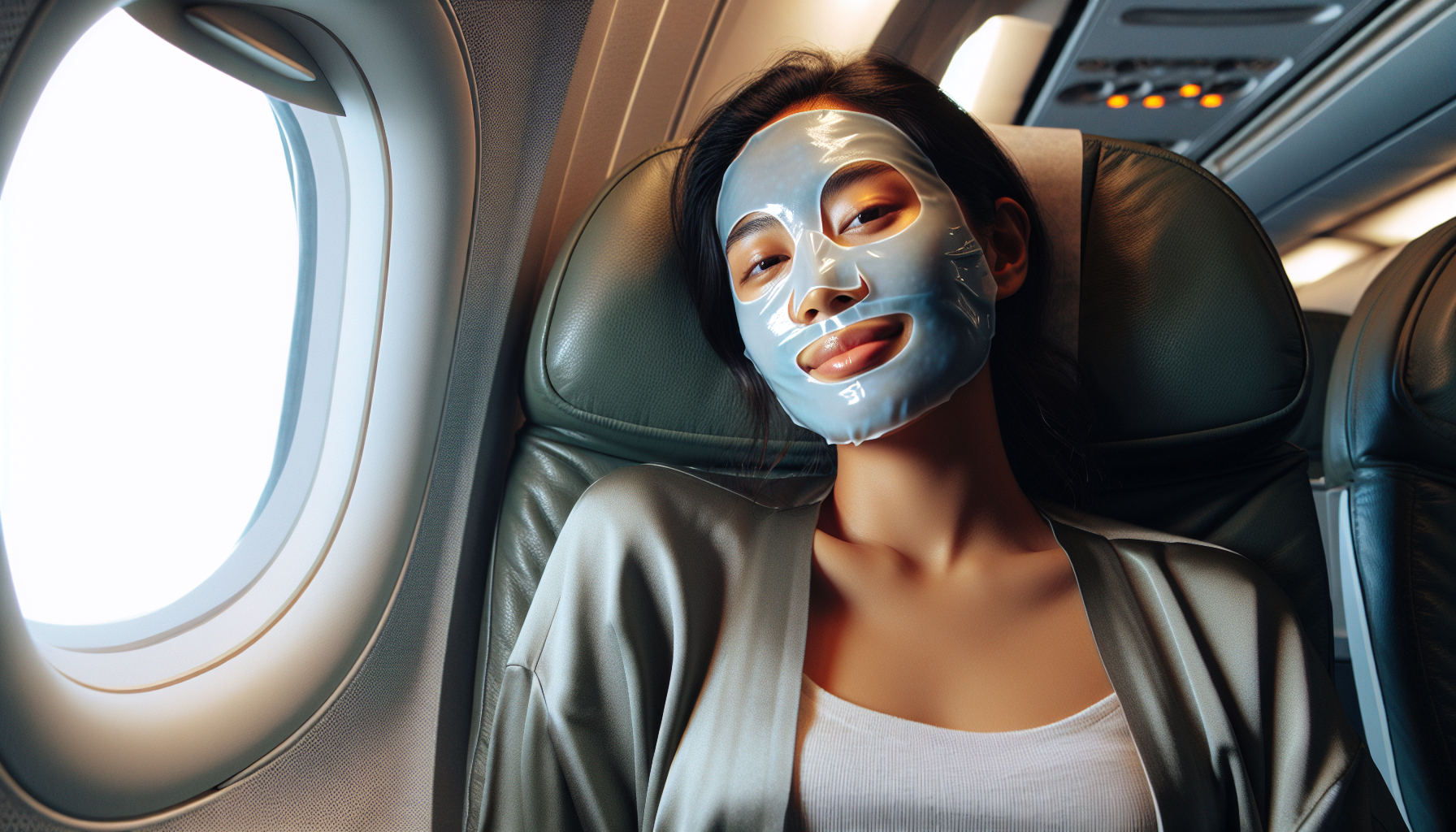Flying can often be an exciting experience, whether it’s for a much-anticipated vacation, a necessary business trip, or a chance to reunite with loved ones. However, it’s not without its downsides – one of which is the impact it has on our skin. The high altitudes and recycled cabin air can lead to dry, dehydrated skin. This article will provide comprehensive strategies to keep your skin hydrated and healthy during flights.
Understanding the Airplane Environment
To combat the effects of flying on your skin, it’s essential to understand the environment you’re exposed to. Airplane cabins have very low humidity levels, often less than 20%, which is significantly lower than the comfortable humidity level for our skin, which ranges around 40-70%. This dry air can dehydrate your skin, leading to tightness, flakiness, and exacerbating conditions like eczema or rosacea.
Pre-Flight Skin Care
Hydration begins well before boarding the plane. In the days leading up to your flight, focus on skin health by increasing your water intake and using moisturizing products. Choose a high-quality moisturizer that suits your skin type, and consider using a hydrating serum with hyaluronic acid to lock in moisture.
Nutrition and Hydration
What you consume can also affect your skin’s hydration. Ensure you’re getting plenty of water and consider avoiding diuretic beverages like coffee and alcohol. Foods rich in omega-3s, such as fish or chia seeds, can support skin health, as detailed in the article on Exploring the Benefits of Omega-3s for Healthy Skin.
In-Flight Skin Care
Once you’re on the plane, it’s crucial to maintain your skin’s hydration.
Moisturize Regularly
Reapply moisturizer throughout the flight, especially on long-haul trips. For convenience, carry a travel-sized container of your favorite moisturizer. Opting for one with ceramides can help reinforce your skin’s barrier, maintaining moisture levels.
Hydrating Mist
Keep a hydrating facial mist handy to spritz throughout the flight. It provides a refreshing boost of hydration without affecting your makeup. Look for mists containing ingredients like aloe vera or glycerin for extra benefits.
Drink Water
Drinking water is just as important in-flight. Aim for at least 8 ounces of water for every hour you’re in the air. Avoid alcohol and caffeine as they can lead to further dehydration.
Avoid Heavy Makeup
If possible, avoid wearing heavy makeup during flights. Makeup can trap dirt and oil, and combined with the dry air, it can exacerbate skin dehydration.
Use a Hydrating Mask
Consider applying a hydrating sheet mask during the flight. It’s a convenient way to provide your skin with concentrated hydration and beneficial ingredients.
Post-Flight Skin Care
After landing, give your skin some extra attention to recover from any dehydration.
Cleanse Gently
Use a gentle cleanser to remove any impurities accumulated during the flight. Avoid harsh, drying soaps and opt for a hydrating cleanser instead.
Rehydrate the Skin
Post-flight, apply a nourishing face mask to replenish moisture. Follow up with a rich moisturizer to lock in hydration.
Rest and Recover
Sleep is crucial for skin health, as detailed in The Role of Skin Care in Holistic Wellness. Ensure you get adequate rest to allow your skin to rejuvenate.
External Resources for Further Reading
- The International Dermal Institute offers insights on how to maintain skin barrier function, which is crucial for retaining moisture during flights.
- The American Academy of Dermatology provides tips for managing skin care while traveling, which complements in-flight skin care strategies.
- A peer-reviewed study in the Journal of Cosmetic Dermatology discusses the role of hyaluronic acid in skin hydration, supporting the use of serums mentioned earlier.
Maintaining skin hydration during flights is essential for arriving at your destination with a healthy, glowing complexion. By following these strategies and incorporating skin-friendly habits into your flying routine, you can reduce the impact of dry cabin air and enjoy a more comfortable journey.



